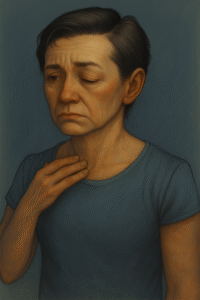Myasthenia Gravis (MG) is a chronic autoimmune disease that causes weakness in the voluntary muscles, especially those that control the eyes, face, throat, and limbs. It happens when the body’s immune system blocks or destroys the communication between nerves and muscles at the neuromuscular junction, preventing muscles from contracting properly.

